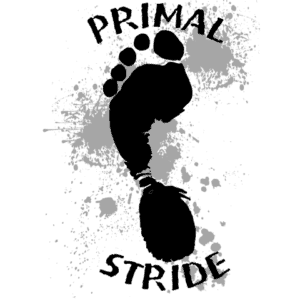Uneven push-ups are a push-up variation performed by placing one hand on the ground and the other hand on a raised surface.
This places more stress on the hand that’s on the ground as opposed to the raised hand, thereby training one hand more than the other.
Uneven push-ups are an excellent exercise to master before progressing to one arm push-ups.
Muscles Worked By Uneven Push-ups:
Uneven push-ups work one side of the chest, shoulders, triceps and serratus anterior more than the other. That’s why it’s important to work both sides of the body when performing this exercise.
How To Perform Uneven Push-ups:
The mechanics of uneven push-ups are similar to regular push-ups except that the working arm does more of the work.
How To Setup Uneven Push-ups:
To perform the perfect uneven push-up you will need something to elevate your supporting hand.
You can use a stack of books, bricks, a step trainer, paralleled, push-up handles or even gymnastics rings to elevate your supporting arm.
Starting position for Uneven Push-ups:
1. To start uneven push-ups, place one hand on the ground and the other hand on the object your using to elevate your supporting hand.
2. Get into the high plank position, with your shoulders stacked above your elbows and wrists and your torso in one straight line.
3. Take a deep breath and squeeze your glutes, thighs and abs to ensure core tightness. This is the starting position for uneven push-ups.
How To Initiate Uneven Push-ups:
To initiate uneven push-ups:
1. Place most of your bodyweight on your working arm.
2. Bend your elbows and bring your chest and torso to the ground while maintaining core tightness.
Bottom position of uneven push-ups:
1. Pause for a second at the bottom making sure that most of your bodyweight is supported by your working hand. This is the bottom position of uneven push-ups.
2. From here, exhale while pushing yourself back up to the starting position, while remembering to maintain core tightness throughout the exercise.
How To Make Uneven Push-ups Harder:
To make uneven push-ups harder, simply raise the level of the supporting hand.
For example if you’re performing uneven push-ups with your supporting arm on a brick, adding another brick under the supporting arm makes the exercise even harder.
How To Make Uneven Push-ups Easier:
To make uneven push-ups easier, simply lower the level of the supporting arm, this allows the supporting arm to do more work during the exercise.
Uneven Push-up Variations:
Most variations of uneven push-ups involve changing the height of the object or the object itself.
This subdivides uneven push-ups into 2 different variations:
1. Uneven push-ups on stable surfaces – This variation of uneven push-ups is suited towards trainees unfamiliar with the movement. Stable surfaces allow the supporting hand to contribute more towards the exercise than unstable surfaces. Some examples of stable surfaces for uneven push-ups include – stacks of books, bricks, stairs, step trainers, push-up handles or parallettes.
2. Uneven push-ups on stable surfaces – Using unstable surfaces to elevate the supporting (or non-working) arm makes it harder for the supporting arm to contribute to the movement. Some examples of unstable surfaces that can be used for uneven push-ups are – gymnastics rings, a football, basketball or even a balance trainer like a bosu ball.
3. Uneven push-ups on fingers – Your fingers can also be used to elevate your non-working hand. This variation of uneven push-ups also builds finger strength as well.
4. Uneven push-ups on knuckles – Making a fist with the supporting hand and placing it on ground slightly elevates it as well. Just like knuckle push-ups this variation of uneven push-ups can be used to condition the knuckles (but only of the supporting hand).
Conclusion:
Uneven push-ups are a fantastic exercise that can be used to progress towards one arm push-ups.
The higher the elevation of the supporting arm the less support it provides.
Completely removing the supporting arm from the equation allows you to perform the one arm push-up.
